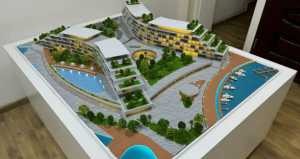How To Choose The Right Material For Your Architectural Model

When creating an architectural model, the material you choose can make a big difference in the final appearance and overall quality. From lightweight foam boards to sturdy wood, making the right choice ensures the final piece accurately represents the design concept. Many professionals seek guidance from architectural model makers in UAE to determine the most suitable materials for their projects.
Foam board
Foam board is one of the most commonly used materials for architectural models due to its ease of handling. It is lightweight, cuts cleanly with a sharp blade, and is perfect for quick concept models. However, it is not the best option for highly detailed or long-lasting models, as it can be fragile over time.
Cardboard
For budget-friendly models, cardboard is an excellent choice. It is easy to cut, fold, and glue, making it ideal for early-stage designs or student projects. While it lacks the durability of other materials, its flexibility allows for rapid prototyping and modifications.
Wood
Balsa wood, basswood, and plywood are frequently used in high-quality architectural models. They provide strength, a refined look, and allow for intricate detailing. While wood is more expensive and requires precise cutting tools, it is the preferred material for professional presentations and long-term displays.
Acrylic and plastic
For contemporary models, acrylic and plastic sheets offer a clean and polished appearance. They are perfect for simulating glass windows, modern facades, and smooth surfaces. These materials require special cutting tools but provide a professional and durable result.
3D printing
With advancements in technology, 3D printing has become a popular choice for architectural models. It allows for the creation of complex shapes and intricate details that would be difficult to achieve with traditional materials. Although it requires access to a 3D printer, it offers unmatched precision and efficiency.
Clay and foam clay
For models that require curved or organic forms, clay and foam clay are excellent materials. They allow for sculpting freeform structures and unique textures that traditional materials cannot easily replicate. However, they require more drying time and finishing work.
Choosing the right material depends on the project’s purpose, level of detail, and budget. Consulting experienced architectural model makers can help ensure the best results for a visually stunning and structurally accurate model.